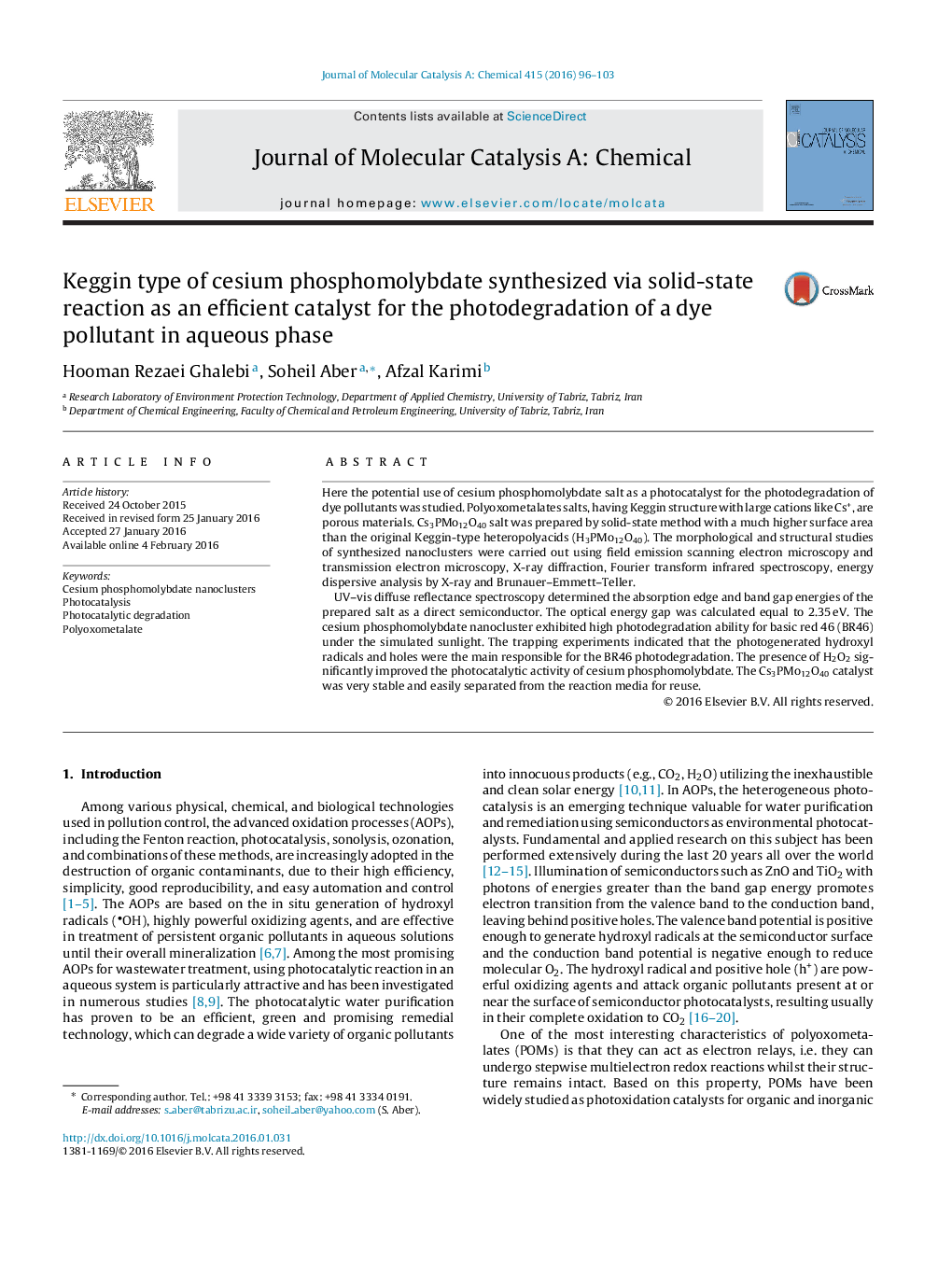| Article ID | Journal | Published Year | Pages | File Type |
|---|---|---|---|---|
| 64693 | Journal of Molecular Catalysis A: Chemical | 2016 | 8 Pages |
•Nano-scaled cesium phosphomolybdate was synthesized via solid-state reaction and characterized.•It showed excellent photocatalytic activity under simulated sunlight irradiation.•Cs3PMo12O40 showed high stability and reusability in photodegradation process.•Important role of O2− and h+ in the photocatalytic degradation of BR46 was proved.
Here the potential use of cesium phosphomolybdate salt as a photocatalyst for the photodegradation of dye pollutants was studied. Polyoxometalates salts, having Keggin structure with large cations like Cs+, are porous materials. Cs3PMo12O40 salt was prepared by solid-state method with a much higher surface area than the original Keggin-type heteropolyacids (H3PMo12O40). The morphological and structural studies of synthesized nanoclusters were carried out using field emission scanning electron microscopy and transmission electron microscopy, X-ray diffraction, Fourier transform infrared spectroscopy, energy dispersive analysis by X-ray and Brunauer–Emmett–Teller.UV–vis diffuse reflectance spectroscopy determined the absorption edge and band gap energies of the prepared salt as a direct semiconductor. The optical energy gap was calculated equal to 2.35 eV. The cesium phosphomolybdate nanocluster exhibited high photodegradation ability for basic red 46 (BR46) under the simulated sunlight. The trapping experiments indicated that the photogenerated hydroxyl radicals and holes were the main responsible for the BR46 photodegradation. The presence of H2O2 significantly improved the photocatalytic activity of cesium phosphomolybdate. The Cs3PMo12O40 catalyst was very stable and easily separated from the reaction media for reuse.
Graphical abstractFigure optionsDownload full-size imageDownload high-quality image (217 K)Download as PowerPoint slide
